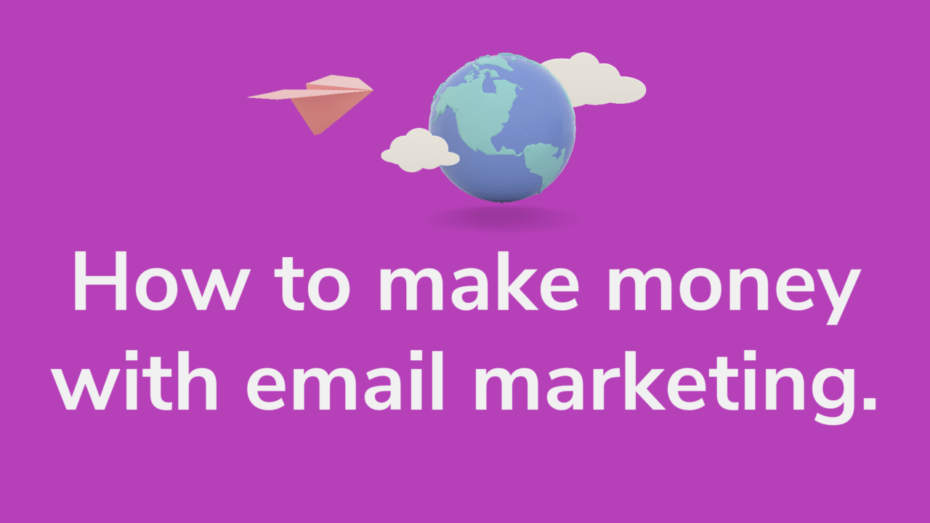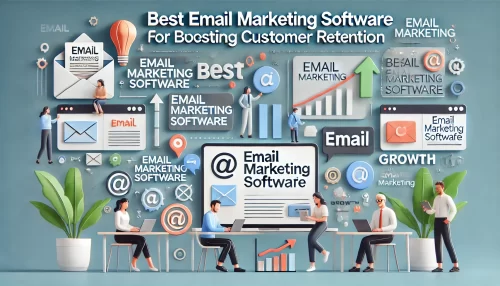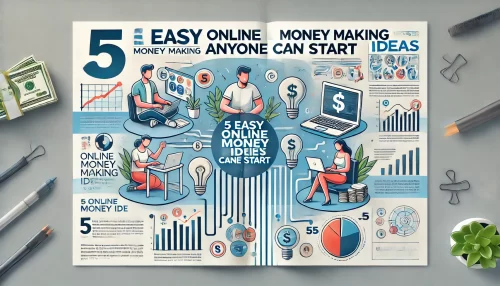Are you looking to make money with email marketing? Wondering how this tried-and-true digital marketing strategy can boost your revenue? If so, you’re in the right place to discover the transformative power of effective email campaigns.
From my perspective, email marketing remains one of the most direct and personal ways to connect with your audience, build relationships, and drive sales. This communication tool, when used correctly, allows businesses of all sizes to reach their customers right where they are: their inboxes. But how can you leverage email marketing to its fullest potential and see a real impact on your bottom line?
In this section, I’ll guide you through the fundamental steps to set up a profitable email marketing strategy. We’ll explore how to choose the right tools, build a responsive list, craft compelling content, and measure the success of your efforts. My intention is to provide you with actionable advice and insights that can help turn your email marketing into a significant revenue stream.
Essential Steps to Start Making Money With Email Marketing
To effectively make money with email marketing, it’s crucial to lay a strong foundation. First, defining your audience precisely is key. Understand their needs, preferences, and behaviors to tailor your approach. Next, selecting the right content is crucial. It should not only inform but also engage your audience, driving them towards making a purchase.
Most importantly, consistency in sending emails builds trust and keeps your brand top-of-mind. Regular, but not overwhelming, communication with your subscribers will ensure they look forward to your messages, increasing the chances of conversion.
When planning your email marketing campaign, remember to integrate it with other marketing efforts. This holistic approach ensures that your messaging is unified across all platforms, providing a seamless customer experience.
Additionally, optimizing emails for mobile devices is non-negotiable. With the increasing use of smartphones, your emails must display well on all device types to ensure maximum reach and engagement. Lastly, clear and compelling calls to action are essential. Guide your readers on what to do next – be it making a purchase, signing up for a webinar, or following you on social media.
Finally, tracking and analyzing the performance of your email campaigns is vital. Use analytics to monitor open rates, click-through rates, and conversions. This data will help you refine your strategy and improve your results over time.
From my perspective, the key to success in email marketing is continuous improvement based on performance metrics, ensuring that each campaign is more successful than the last.
Choosing the Right Email Marketing Platform
Selecting the right email marketing platform is crucial for your campaign’s success. It should align with your business size, audience, and specific marketing goals. Look for platforms that offer intuitive design tools, robust automation features, and detailed analytics.
These features enable you to create attractive and effective emails quickly, automate your workflow to save time, and track your campaign’s performance.
Integration capabilities are also vital. The platform should seamlessly integrate with other tools you use, such as CRM software and e-commerce systems, to streamline your processes and enhance data sharing across platforms. This integration helps in personalizing emails based on user behavior and preferences, which can significantly boost engagement rates.
Security and compliance should not be overlooked. Choose a platform that follows strict data protection regulations, such as GDPR, to safeguard your subscribers’ information. This not only protects you legally but also builds trust with your audience.
Additionally, reliable customer support is essential. Being able to access prompt help when needed can prevent potential disruptions in your email campaigns.
Email Marketing Recommendations
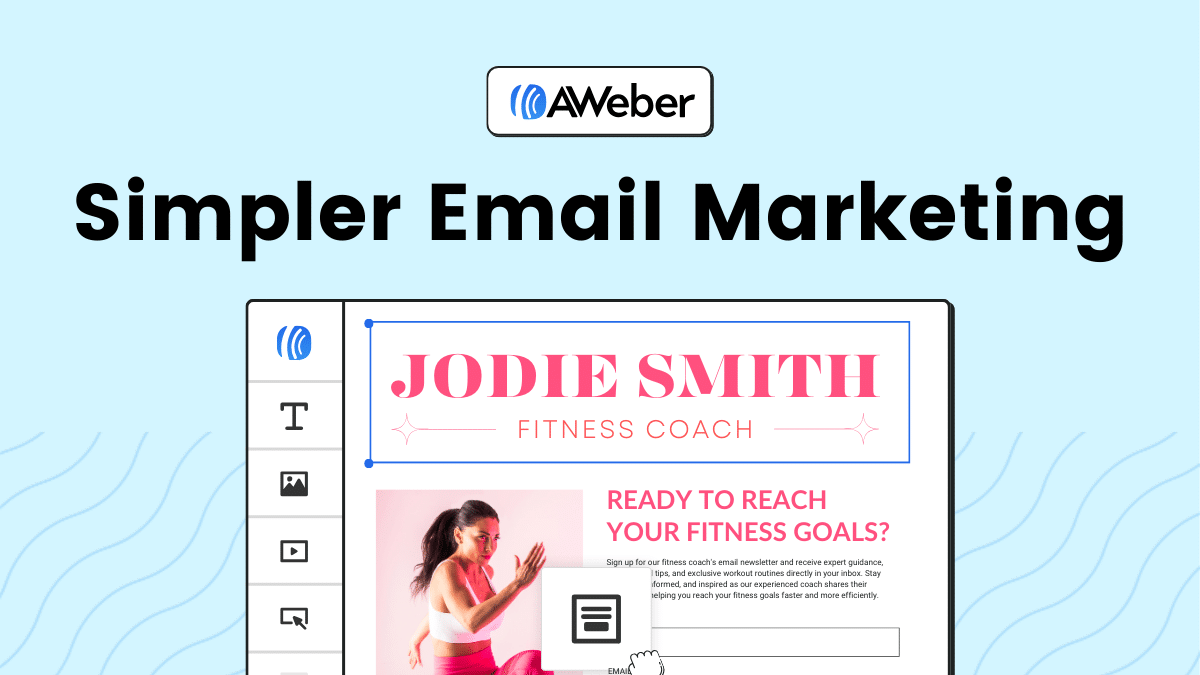 Aweber
| 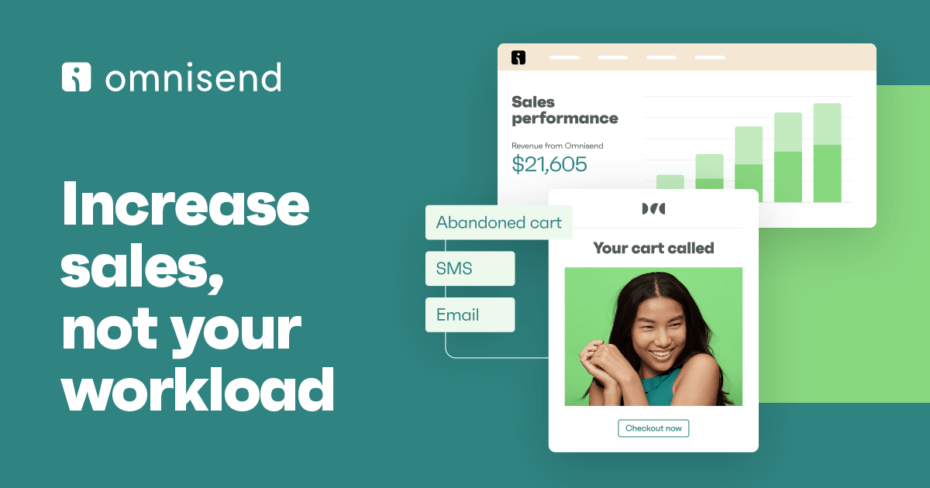 Omnisend
| 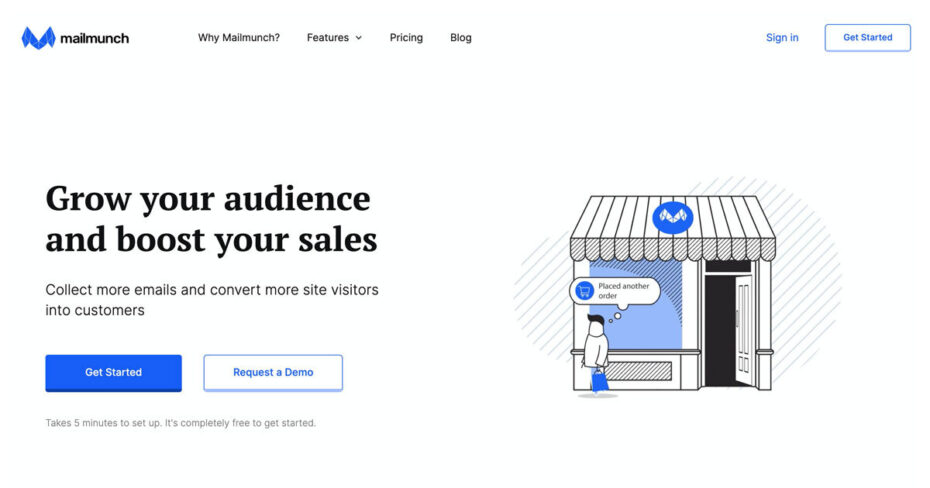 Mailmunch
|
Building and Segmenting Your Email List for Better Targeting
Building a segmented email list is key to enhancing engagement and conversions in your email marketing efforts. Start by collecting relevant data from your subscribers. This can include demographics, purchase history, and browsing behavior. The more detailed your data, the better you can segment your list and tailor your emails to meet the specific needs and interests of different groups.
Effective segmentation allows for highly targeted campaigns. For instance, sending product recommendations based on past purchases or customizing content according to subscriber location can dramatically increase relevance and engagement. My suggestion is to continuously refine your segments as you gather more data and insights from your campaigns.
Permission-based sign-ups are crucial for building a healthy email list. Ensure subscribers actively opt-in to receive communications from you. This not only complies with email marketing laws but also ensures that your audience genuinely wants to hear from you, which improves open and click-through rates.
Lastly, regular list maintenance is vital. Remove inactive subscribers and update information as necessary to keep your list clean and engaged. This practice helps improve the accuracy of your segmentation and the overall effectiveness of your campaigns, maintaining a high quality of interaction with your active subscribers.
Crafting Compelling Emails That Encourage Readers to Act
Writing emails that capture attention and prompt action is crucial in making money with email marketing. To start, the subject line must be irresistible. It’s the first interaction recipients have with your email, so make it count. Personalize it to add a touch of exclusivity.
Next, the opening line should hook the reader immediately, conveying the email’s value right away. This could be a provocative question or a surprising fact that relates directly to their needs.
Content relevancy cannot be overstated. Each email should offer something valuable — be it insightful information, a special offer, or an exclusive update. Tailor your content to the recipient’s interests and past interactions with your brand.
This personal touch increases the likelihood of engagement. Moreover, keep your emails concise. Time is precious, and a clear, direct message respects that. Strip out fluff and focus on delivering a compelling message that’s easy to digest.
Lastly, close with a clear, actionable message. Whether it’s a call to subscribe to a newsletter, shop an exclusive sale, or learn more about a product, the action you want the reader to take should be clear and simple to execute.
Often, a single, well-defined call to action (CTA) can be more effective than multiple requests. I strongly believe that the simplicity of the message combined with a direct CTA increases conversion rates significantly.
Designing Emails for Maximum Engagement
The design of your email plays a critical role in how well it performs. An attractive, well-organized layout catches the eye and makes the content easier to digest. Use a clean, responsive design that adapts well to both desktop and mobile devices, as a significant portion of users checks email on their smartphones.
Images should be used strategically; they should enhance the message without overwhelming the text. Too many visuals can distract and slow down loading times, potentially driving away engagement.
Consistency in your email design reflects your brand identity. It reassures recipients of the email’s legitimacy and enhances brand recognition. Maintain consistent fonts, colors, and layouts that align with your overall branding strategy.
Furthermore, make sure your emails are accessible. Use alt text for images and easy-to-read fonts to ensure everyone, including those with disabilities, can interact with your content effectively.
White space is your friend. It helps to break up text and elements within the email, making the content more approachable and easier to navigate. I recommend balancing text and white space to guide the reader’s eyes naturally through the content. Clear division sections can help emphasize key points and lead the reader toward the call to action.
Writing Effective Calls-to-Action in Your Emails
A powerful call-to-action (CTA) is more than just a button or a link; it’s the climax of your email’s narrative. Start by being specific about what you want the reader to do next. Use action-oriented language that incites enthusiasm or urgency. Phrases like “Grab your seat now” or “Offer ends soon” create a sense of urgency and prompt immediate action.
Visibility is key. Place your CTA where it’s easy to find and clicks. Generally, it’s best to position it high in the email, within the natural reading path, so it’s seen without having to scroll. This placement maximizes exposure even for those who may not read the entire email. Additionally, make the CTA button large enough to be easily clickable, especially on mobile devices.
Lastly, test various CTAs to determine which resonate best with your audience. A/B testing different messages, colors, and placements can uncover the most effective combination for driving conversions.
My recommendation is to always be testing and refining based on the results. This iterative process is key to finding what truly motivates your subscribers to take action and enhances the profitability of your email marketing efforts.
Advanced Techniques to Optimize Your Email Campaigns
Refining your email marketing strategies is essential to adapt to the changing behaviors and preferences of your audience. My first recommendation is to consistently update your email list. Remove unengaged subscribers and correct invalid email addresses to maintain a high deliverability rate.
Secondly, I suggest integrating your email marketing efforts with other channels, such as social media or your main website. This creates a cohesive marketing experience for your customers. Most importantly, keep your content fresh and engaging by following current trends and subscriber feedback, ensuring that your messages are always relevant and appealing.
Utilizing predictive analytics can also enhance your email marketing. By analyzing past behaviors and trends, you can predict future actions of your subscribers and tailor your campaigns accordingly. This data-driven approach allows for more personalized and effective emails.
Additionally, optimizing send times based on when your users are most active can significantly increase open rates and engagement. Each audience segment may have different peak times, so it’s crucial to adjust sending schedules to match these patterns.
Lastly, never underestimate the power of personalization in email marketing. Beyond using a subscriber’s name, tailor content based on their purchase history, browsing behavior, and other personal data.
This strategy increases the relevance of your emails, making them more likely to engage and convert. From my experience, subscribers are more responsive to emails that feel specifically crafted for them.
A/B Testing: Finding What Works Best in Email Marketing
A/B testing is a powerful tool to determine the most effective elements of your email marketing campaigns. Start by selecting one variable to test, such as the subject line, email content, or call-to-action.
Keeping other elements constant ensures that any performance differences are due to the variable being tested. From my perspective, testing two variations simultaneously under the same conditions will provide clear insights into which version resonates more with your audience.
Next, decide on a significant sample size for each variation to ensure that your test results are statistically reliable. I recommend using an email marketing tool that can automate this process and accurately measure open rates, click-through rates, and conversions. Analyze the results to see which variation performed better, and use these insights to optimize your future emails.
It’s also beneficial to continuously conduct A/B tests across different campaigns to refine your approach. Testing different aspects of your emails regularly can lead to incremental improvements, enhancing the overall effectiveness of your email marketing strategy. Remember, what worked once may not always yield the same results, so ongoing testing and adaptation are key.
Automating Email Campaigns for Increased Efficiency and Profit
Automating your email campaigns can bring significant efficiencies and enhance profitability. Automation tools enable you to trigger emails based on specific actions your subscribers take, ensuring timely and relevant communication.
For instance, sending a welcome email immediately after a new subscriber signs up can start building a relationship effectively. My advice is to also set up automated emails for cart abandonment, birthday offers, and re-engagement campaigns to boost conversions without additional manual effort.
Implementing segmentation in your automation strategy is crucial. By dividing your list into different groups based on behavior or demographics, you can send more targeted, personalized emails. This approach not only improves engagement but also reduces the likelihood of unsubscribes due to irrelevant content.
Moreover, it’s important to monitor and tweak your automated emails regularly. Check the performance of each campaign and make adjustments based on subscriber interactions and feedback.
This could involve updating the content, changing the frequency of emails, or even revising your segmentation strategy. Effective automation isn’t just about setting up once and leaving it; it’s about continually refining your approach to stay relevant and compelling.
Measuring Success in Your Email Marketing Efforts
To make money with email marketing, it’s essential to understand how to measure the effectiveness of your campaigns. This begins with identifying clear goals for what you want each campaign to achieve, whether it’s increasing sales, boosting newsletter sign-ups, or improving customer retention.
Once you have your goals set, tracking the right metrics will help you understand if you are meeting these objectives. I suggest setting up a robust analytics platform that integrates with your email system to capture and analyze data efficiently.
The second step is continuous monitoring. Regularly checking the performance of your email campaigns allows for timely adjustments and optimizations. For instance, if a campaign is not performing as expected, you can quickly tweak the email content, design, or even the send time to test different approaches.
Speaking personally, I believe that the agility to make quick decisions based on real-time data significantly enhances the effectiveness of email marketing efforts.
Lastly, comparing the performance of your campaigns over time is crucial. This longitudinal analysis helps identify trends and patterns that can inform your future strategies. For example, if you notice a decline in engagement rates over several months, this might indicate it’s time to refresh your email content or reevaluate your audience segments.
From my perspective, long-term tracking is key to understanding the overall health and ROI of your email marketing strategy.
Key Metrics to Track in Email Marketing
Understanding which metrics to track is fundamental to evaluating the success of your email marketing campaigns. Open rates are a primary metric, as they indicate how many people are interested enough in your subject line to open the email.
However, while high open rates are encouraging, they don’t provide the full picture. Click-through rates (CTR) are even more critical as they show how many subscribers are engaged enough to click on links within the email, moving them closer to a conversion.
Conversion rates are the ultimate measure of success, showing the percentage of recipients who have taken a desired action, such as making a purchase or signing up for an event. These are directly tied to your bottom line.
Additionally, bounce rates should be monitored to ensure your emails are reaching their intended recipients; a high bounce rate could indicate issues with your email list health or deliverability problems.
Unsubscribe rates are also telling, as they help gauge the overall reception of your campaigns. A sudden increase in unsubscribes can signal that your content is not resonating with your audience or that emails are being sent too frequently. My advice is to use these insights to continually refine your approach, ensuring content remains relevant and appealing to your audience.
Using Analytics to Refine Your Email Marketing Strategy
Analytics play a pivotal role in refining your email marketing strategy and boosting profitability. By analyzing the data collected from your campaigns, you can make informed decisions about what works best for your audience. For instance, if data shows that emails sent on weekends have higher open rates, you might consider scheduling more campaigns during these times.
Segmentation is another area where analytics can be extremely beneficial. By understanding the behaviors and preferences of different audience segments, you can tailor your emails to meet their specific needs, enhancing engagement and conversions. From my perspective, targeted campaigns based on solid data are generally more successful than generic ones.
Lastly, testing is crucial. Use analytics to conduct controlled A/B tests on different aspects of your emails, from subject lines to images and call-to-action buttons. This will reveal what resonates best with your audience and what leads to higher conversion rates.
My recommendation is to always base your decisions on data rather than assumptions. This approach ensures your strategy remains aligned with what your subscribers truly want, leading to better results and higher returns on your email marketing investments.


